Lupine Publishers- Anthropological and Archaeological Sciences Journal Impact Factor
Abstract
a. Tight-clustering resulting in the formation of a large “single mound site”, and
b. Loose-clustering with scattered individual mounds of different size and shape.
Residential and craft requirements combined differentially in the 2000 years Mouhoun Bend settlement history, have generated the settlement patterns investigated in the study area. The ethnicity component of the identified dynamics – that is plausible – could not be tracked with the current methodology and is accordingly undecidable.
Introduction
Table 1: Radiocarbon dates from the Mouhoun Bend Archaeological Project.
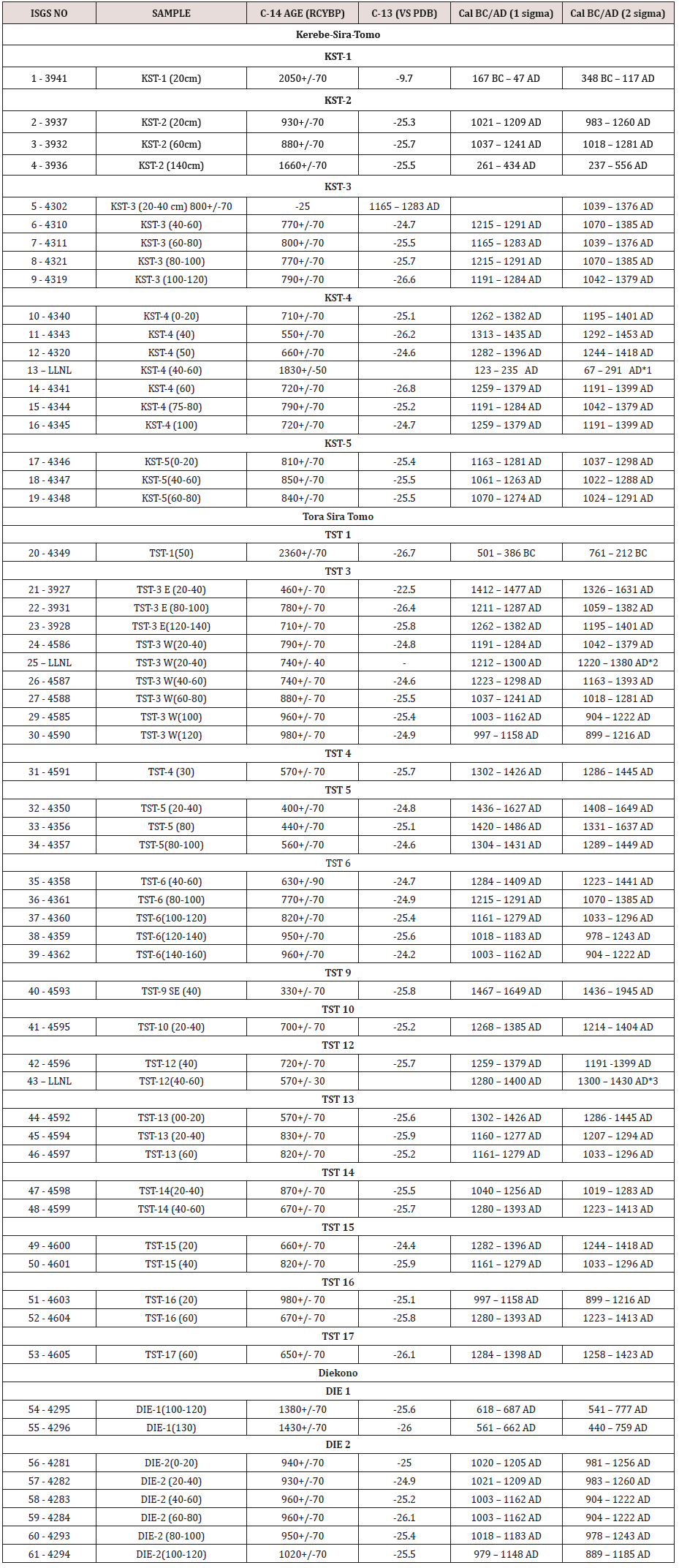
Key: LLNL = Lawrence Livermore National Laboratory:
* Radiocarbon dates from iron objects processed by Dr. Andrea C. Cook at Lawrence Livermore National Laboratory, UC Berkeley.
*1 = from an iron ring
*2 = from a small iron spear
*3 = from a large iron spear
Mounds result from the piling up on the same spot of human
occupation by-products. They include habitation features, craft
installations, collapsed building material as well as discarded
and abandoned material culture. They are therefore exclusively
human-made and, depending on circumstances, can be either well
preserved or significantly disturbed by erosion agencies. These
formation processes that combine cultural (C-transforms) and
natural (N-transforms) are well understood in general [2,3].
* Radiocarbon dates from iron objects processed by Dr. Andrea C. Cook at Lawrence Livermore National Laboratory, UC Berkeley.
*1 = from an iron ring
*2 = from a small iron spear
*3 = from a large iron spear
Habitation mounds dating from the Late Stone Age onwards are recorded in different parts of West Africa, from the Chadian basin to Mali and Guinea [4-18]. They consist either of a single small or large mound or of multiple mounds (mound-cluster). It has been suggested that mound-clusters may have derived from residential segregation, inhabited by different specialized more or less endogamic groups such as blacksmiths, potters, hunters, fishing folks, bards, etc. [19,20]. Distinct mounds are thus axiomatically considered to materialize residential segregation, and as such, are the signature of craft-specialization. The explanation is tautological. No excavation program was implemented to test the accuracy the hypothesis mentioned above. The testing procedure may have required an appropriate methodology, consisting at least of the probing of all the mounds part of the settlement complex under investigation, a precise and fine-grained chronology backing detailed analyses of material culture, architecture, and subsistence remains. It is then and only then that variation – or lack thereof – can be assigned to differences in social status. These principles have guided the field strategy implemented in the Mouhoun Bend Archaeological Project [21,22].
The Mouhoun River flows from the SW to NE, winds its course in a U-shape bend to follow a N-S direction (Figure 1). The study area located in the Sudano-sahelian zone is delimited in the north and northeast by the meandering river course. It measures 40km East-West (3o 11’ North / 3o 32’ East) and 38km North-South (12o 30’/ 12o 45’ latitude North). The land, prone to cyclical droughts, is flat with elevation ranging from 294 to 249m above sea level. The vegetation is characteristically a highly anthropic wooded savanna, with the protected shea-butter tree (Butyrospermum parkii) largely predominant, followed by different kinds of Acacia sp.
Three mound-clusters located in in different environments were selected for excavation: Diekono in the Mouhoun River floodplain, Kerebe-Sira-Tomo (KST) on the cliff delimiting the river valley, and Tora-Sira-Tomo (TST) and its satellite Gnambakouon-Sira- Tomo (GST) on the topographic rise in the central part of the study area. Each of the above mentioned sites is comprised of a number of mounds of different size and shape, iron-working workshops, and laterite quarries.
The Dynamics of TST and KST Mound-clusters
The long-term pattern of growth of inhabited space within a mound cannot be assessed with the field methodology implemented in this case, with one test unit per mound. A general time line of the settlement complex formation can nonetheless be reconstructed.TST settlement complex (12o 35’ 07” N and 3o 22’ 07” E) is located at 280m asl. With 17 distinct mounds, it is the largest settlement complex of the study area, spread over 900m westeast and 500m north-south, some 45ha in total surface extent (Figure 2). TST-3, the largest mound stretched along the north edge measures 260m west-east, and 120m north-south. All 17 mounds were tested after three field seasons (1997, 1999, and 2000). Five, TST-1 (Iron smelting), TST-2 (quarry), TST-4 (cloth weaving and dyeing workshop), TST-9 (cemetery), and TST-17 (oil production workshop), are special purpose sites. The fourteen remaining ones were standard habitation mounds with varying occupation intensity
KST settlement complex is located on the cliff top along the edge of the Mouhoun River valley (Figure 3). The complex consists of eleven more or less distinct mounds stretched on 350m westeast and 600m north-south. The cluster is made of three distinct sites categories: a quarry (KST-2) located at some 800m east, iron-working stations both smelting and forging, and habitation mounds. Habitations mounds, clustered in the north, resulted in the formation of a large 15ha village site. All iron-working stations, arranged along a roughly ENE-WSW axis, are concentrated at 100 to 200m along the south flank of the main habitation cluster. KST settlement complex was inhabited from the second half of the first millennium BC to the second half of the thirteenth-century AD, with an important 500 years occupation hiatus in the second half of the 1st millennium AD. The development of TST and KST settlement complexes can be arranged in four successive phases, from the middle of the first millennium BC to the middle of the second millennium AD.
Phase I (650 BC-800 AD)
At TST, the initial settlement phase (650 BC-800 AD) that started in the mid-1st millennium BC is documented at TST-1, TST-2, and TST-3-East (Figure 4, Table 2). The earliest occupations are found at TST-1, an iron-smelting site dated to 650-395 BC (Figure 5), TST-2, the quarry site that provided raw material for house construction and iron production, and finally, the blacksmith workshop exposed at the bottom of TST-3-East probe.KST settlement complex phase I dated to 350 BC-150 AD was shorter. It is documented in the west-central part of the complex, in KST-1A and KST-2 the quarry site (Figure 6). KST complex grew in two directions during its phase II dated to 250 – 550 AD. KST- 1B and KST-3 areas were settled. The mound was of an irregular potato- shape, oriented SW-NE. KST-2, the quarry site, was relied upon for the supply of iron ore and construction material during the whole existence of the settlement complex
Phase II (800 – 1100 AD)
TST Phase II (800-1100 CE) settlement with a total of 8 mounds, witnessed the foundation of 5 new sites. They were arranged in two sub-clusters of four sites each: TST-1, TST-2, TST-3, and TST-6 in the west, and TST-4, TST-12, TST-13, and TST-15 in the east (Figure 4, Table 3). The western sub-cluster consisted of two residential mounds: TST-3 and TST-6, and two special purpose sites: TST- 1(iron-smelting and ritual) and TST-2 (quarry). The eastern subcluster includes TST-13 and TST-15 residential sites, and TST-4 (weaving and cloth dyeing workshop) and TST-12 (a blacksmith workshop) special purpose sites (Holl 2014). KST complex was abandoned during all the second half of the 1st millennium AD, from ca. 550 to 1000 AD.Phase III (1100 – 1400 AD)
TST settlement complex reached its maximum extent during phase III (1100-1400 AD) with the addition of 7 new sites. All 15 mounds (Figure 4 & 7, Table 4) were located in the space delineated during phase I and II. The new additions are set in two patterns. TST-5, TST-7, TST-8, and TST-10 present a rectilinear arrangement of equidistant mounds at 100m from one to the next. TST-5, TST- 7, and TST-8 residential mounds ‘sits’ on burials dug deep in the laterite crust in what may have been an earlier cemetery. TST-14, TST-16, and TST-17 are along the northeastern flank of the complex, at 100m from one to the next, in a linear east-west arrangement. TST-14 and TST-16, were residential and TST-17 a karité oil production workshop.KST complex also witnessed an accelerated growth during Phase III (1000-1250). KST-IA and 1B, KST-2 (quarry site), KST-3, KST-4 (occupation I and II), KST-5, and KST-6 (Figure 6) were all inhabited and in use. Fire destroyed habitation units from KST-3 occupation I and KST-4 occupation II (Figure 8 & 9), located along the southeast flank of the complex. There was also a significant intensification of iron-working, with the foundation of workshops devoted to iron-smelting, blow-pipes making, and blacksmithing along the south margins of the main village.
Phase IV (1400 -1650 AD)
TST settlement complex shrunk significantly during Phase IV (1400-1650 AD). The number of inhabited sites dropped from 15 to 9. The eastern part of the cluster was abandoned (Table 5, Figure 4). A new restricted access cemetery was founded at TST-9. TST-3, TST-4, TST-5, TST-6, TST-7, and TST-8, were residential. TST-1, TST- 2, and TST-9, respectively iron-smelting site, quarry, and cemetery, were special purpose sites. In general, with the exception of TST- 8 set between TST-4 and TST-7 (Figure 4), the distance between neighboring mounds oscillates around 100m.An identical phenomenon occurred at KST. The inhabited space also shrunk considerably during KST phase IV (1250-1450 AD) (Figure 6). Shallow occupation evidence is documented at KST-4 occupation III and IV, then used as a cemetery.
Variability of mounds clustering processes
Data collected from the excavation of four settlement complexes point to the existence of two main mound-clustering strategies: a tight and a loose one. KST settlement complex that lasted from ca. 350 BC to 1450 AD, with a half millennium occupation hiatus in the second half of the 1st millennium AD, features tight-clustering (Figure 7 & 8). All the residential sites, with the exception of KST- 4, are tightly packed in a 15ha village. Iron-working sites located along the south periphery of the village display no habitation. Craft people and work crews were KST villagers who commuted to their workshops during the iron-production seasons.TST-GST settlement complex with a total of 20 mounds features the loose-clustering strategy. The mound-sites, 17 for TST and 3 for GST are well demarcated, with each sub-set presenting a large dominant mound. Residential and special purpose sites are represented in varying combinations all along TST settlement complex occupation history.
Archaeological data indicate that flexible strategies were adopted by the different ‘self-sustaining’ autonomous ancient villages during the 2200 years’ occupation of the Mouhoun bend. In KST, craft people resided in the village and commuted to their workshops located in the southern outskirts of the complex. In the TST alternative, with more or less inter-phase variations, craft people built their residence in distinct places and supplied local communities from their workshops. There is no fixed and permanent pattern of residential and occupational segregation in the analyzed archaeological record [21,22].
Peer-village interaction
The study area is relatively flat. The recorded settlement complexes are more or less evenly distributed in the landscape. In site-catchment analysis terms, each village is surrounded by rings of cultivated fields, fallow zones, and bush [23,24]. At their peak, during the first centuries of the 2nd millennium AD, each of the recorded settlement complex was a large autonomous and selfsustaining village. Some, like KST and Kirikongo, were compact villages with a few outlying mounds and special purpose sites. Others, as was the case for TST – GST and Diekono, were spread out with a multiplicity of distinct mounds.There are no significant wealth differences. Grave-goods and burial offerings are too marginal to be significant. Some individuals, male, female, children, and infants, were nonetheless buried in “restricted access” cemeteries while others were buried in their compounds. This differential treatment points to subtle variations in social status without detectable and/or durable material correlates. The accelerated growth at the beginning of the 2nd millennium AD initiated a scramble for land, villages rivalry, violence, and wars.
Fire: accidents or wars?
Burnt houses were recorded in some of the excavated mounds. It is the case at TST-3-West in occupation I and II, dated to 1000- 1150 AD. Domestic installations belonging to two successive occupations were totally burnt down. KST complex also present two instances of burnt domestic installations dated to 1050 – 1380 AD: one at KST-3 occupation I and the other at KST-4 occupation II. In the latter case, a whole household complex with its food supply was destroyed by fire (Figure 9). Similar cases of burnt installations dated to 1300-1450 AD were recorded at Kirikongo, Mound III, level 8 and Mound IV, level 7 [8]. These events took place during a period of accelerated growth that triggered violent confrontations.War, Violence and surgery
There is no direct one to one correlation but the unrest indicated by burnt houses is partly corroborated by traumatic injuries found on some of the deceased. Two male and female adult individuals buried in the same context at TST-7 appears to have been victims of the same violent encounter. One, a 35-50 years old adult female presents 4 well healed cranial fractures on the occipital, frontal, and left parietal. The other, an impressive 1.95m tall 45+ years old male presents two distinct episodes of trauma. He recovered from previous blows indicated by a well healed circular defect on the occipital. He has multiple trephinations with no signs of healing on the right, left parietals and frontal, showing that the second series of blows was fatal. Remarkably, both adults present similar blows patterns: they were hit on the frontal, occipital, left and right parietals, as if the aggressors were well trained fighters [25-27]. The surgery may have taken place after a violent raid. Finally, a 9-11 years old pre-adolescent, individual 18 from phase IV TST- 9 cemetery, presents multiple peri-mortem depressed cranial features made by a sharp object, that was very likely the cause of death [26].The recorded evidence on traumatic injuries is dated to phase III (1000-1200 AD) and IV (1250-1500 AD) when the area witnessed a significant growth acceleration followed by the onset of devolution. There are convincing evidence of conflict and intervillage warfare during the first half of the second millennium AD. The nature and characteristics of the kind of warfare that may have developed in the area during this phase of accelerated growth are difficult to decipher. The tactics involved may have consisted of surprise raiding and counter-raiding with the aim of seizing supplies and host [27-37].
Conclusion
Read More Lupine Publishers Anthropological & Archaeology Journal Articles: https://journalofanthropologicalsciences.blogspot.com/

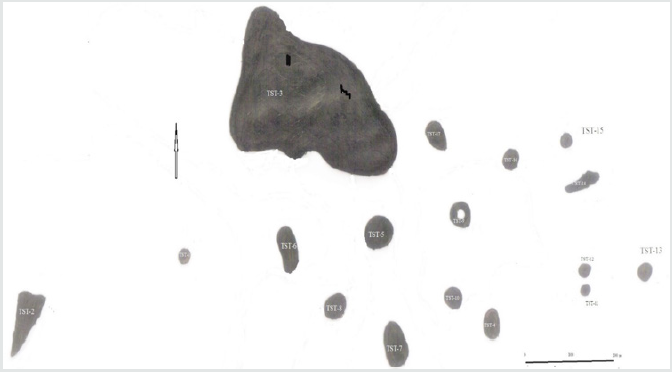
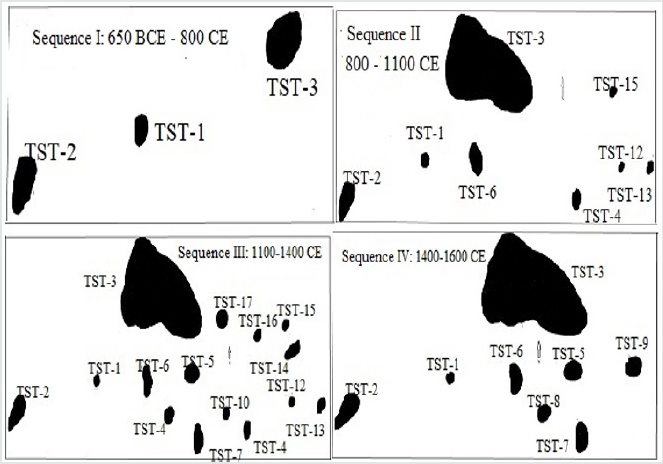
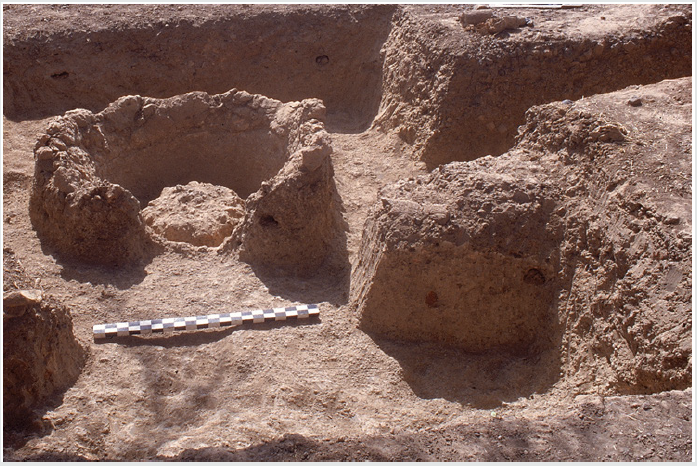
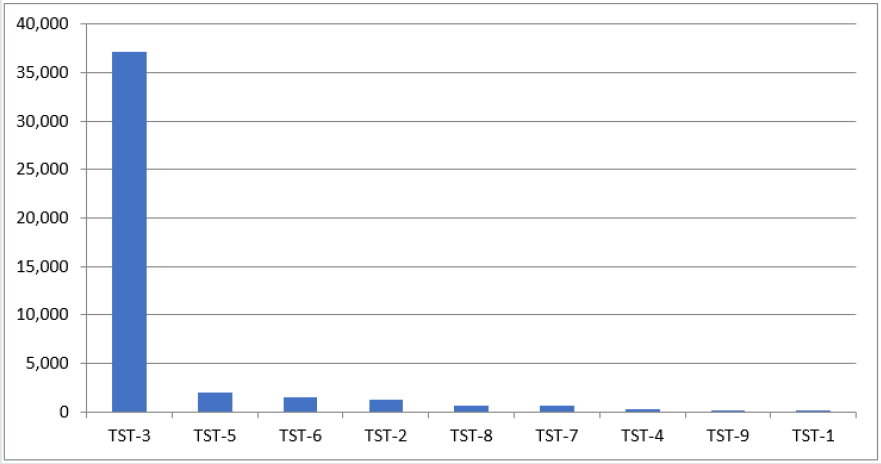



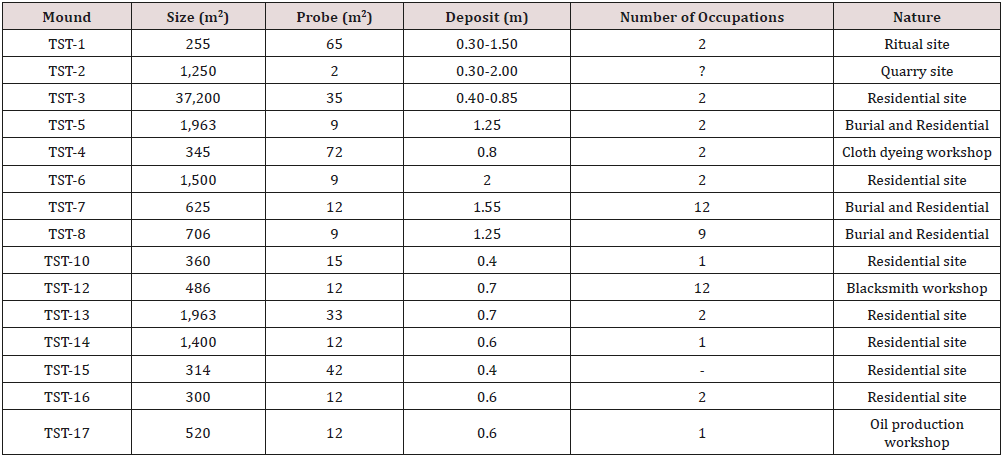

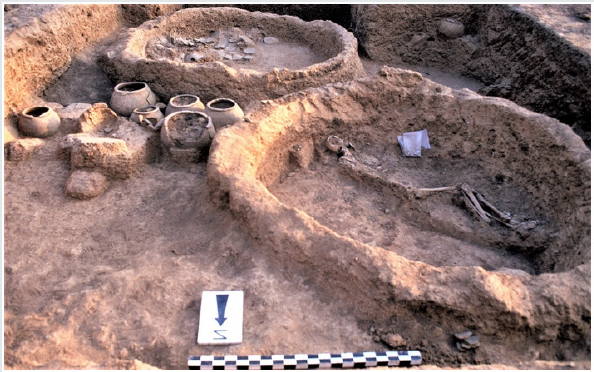
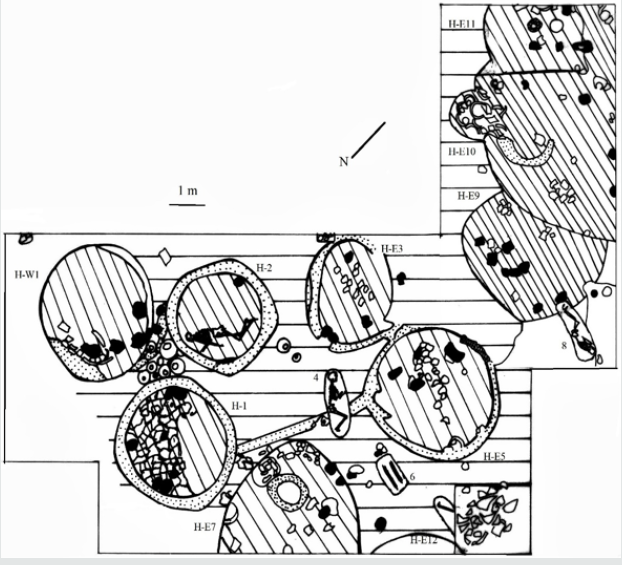

No comments:
Post a Comment
Note: only a member of this blog may post a comment.